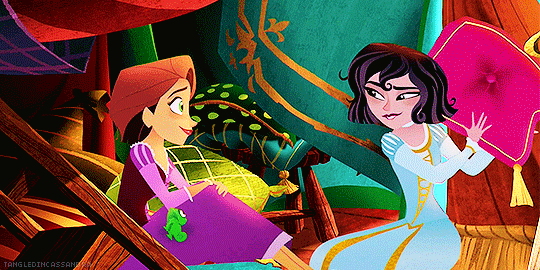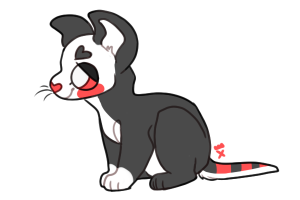Red Hood wrote:Hey guys, wondering if I might be able to get some help with this piece, redline would be really appreciated. ? I am working on this as my 'welcome post' for my HARGP horse and rider. Human anatomy is killing me slowly but I am also struggling more than normal with the horse. New pose and the legs just look really off.
I really need to shrink down the guy, or make the horse a little longer because he is only meant to just see over the withers lol

I'm not sure how good I am with art advice, but I'll give it a try.
First off, your horse is adorable. ^^ They're just got such a cute look about them. The length of the legs looks pretty good. The main problem I'm seeing is the legs are too thick and lack definition. Studying horse anatomy you'll find they're very oddly shaped animals - far odder than we give them credit for. They're very angular, bony creatures, which makes drawing them difficult. And they have these large heavy bodies, but their legs in comparison are quite thin. The lower portion of the legs of horses (the cannon bone - which in humans is actually our metacarpals and covered by the fat and skin of our palm/foot), is basically just bone and tendon covered with a bit of skin. There's a rule in nature that says forms taper as they move away from the main body. They bulge again at joints, and continue to taper. For example, your leg tapers down to your knee, from there your calf tapers down to your ankle - this is true of all appendages on all creatures, from your fingers, to the legs of a horse. So your horse's lower leg, beneath the joint should not be as thick as it's upper leg. The lifted back leg actually seems to follow this rule really well, though it could be thinner. It's the foreleg that seems to be the problem. The cannon should taper to the fetlock joint (in humans this joint is actually where the our fingers emerge from our palm). From there it tapers again down to the pastern and hoof. Seeing examples would probably be far more helpful, so I'm gonna
break out the Da Vinci drawings again! Seriously though, old master sketches like these are among the best things an artist can study. Just look at how thin and bony the cannon is compared to the forearm.
I do believe that the perspective is off, but it's hard to tell with the person in the way. Either the horse is too short, or it's not foreshortened properly. I would recommend drawing perspective lines on the ground to get an idea of the plane the horse is standing on. You might want to move the drawing up a bit on your canvas if that's possible to do so. The back legs should line up with the forelegs. In this case it would be very helpful to find some reference of a horse standing in that position, or double check the reference you're using. I like to use reference to find the angles of the ground plane. Checking to make sure the feet on my drawing fall along the same angle as they do in a reference is extremely helpful.
As for the human, you fell into a trap that everyone falls into. And that is that you made his torso too long, and his legs too short. It's a really common mistake that everyone makes. Our brains like to assume that the upper part of the body is bigger because that's where our eyeline falls, and that's what we notice first about a person; their face, their clothing, what their arms are doing. In actuality, our legs generally make up half our total height. If you took a standing figure and divided it in two equal parts, the skull, rib cage and pelvis would make up the top half, and the entire bottom half would just be the legs. There's variations of course, but it's a good rule of thumb in drawing that the legs on a standing figure will start halfway down the body. I always start off a standing figure pose by finding the middle and placing a mark there to remind me.
I think it's really awesome that you're drawing horses and humans. Those have got to be among the hardest things to draw, but it's a very rewarding enterprise. If you can nail those two things there's really no creature you
can't draw at that point. And drawing the two together is always an exercise in getting the size right. I can't really help much with size, since humans and horses both vary so widely in height, there's really no standard you can go off of. The only advice I can give is to find reference of people standing beside the breed you're drawing, and measure them comparatively. The same applies if you want to draw someone riding a horse. Also bear in mind that horse heights have changed over time - horses are generally taller now than they would've been in the past, and this is reflected in the art of the time. So bear this in mind when seeking out reference.
I hoped that helped in some way. I know it's a bit rambly, but hopefully it makes sense.











